When planning a seven-day trek to Annapurna Base Camp, one might wonder what to expect along the way. With winding trails through vibrant rhododendron forests and encounters with friendly Gurung communities, it’s a blend of natural beauty and rich culture. A seasoned trekker recalls the thrill of reaching the base camp at 4,130 meters, where the majestic peaks loom large. However, every trek has its challenges, and knowing how to prepare can make all the difference. So, what should trekkers keep in mind before setting off into the heart of the Himalayas?
Key Points
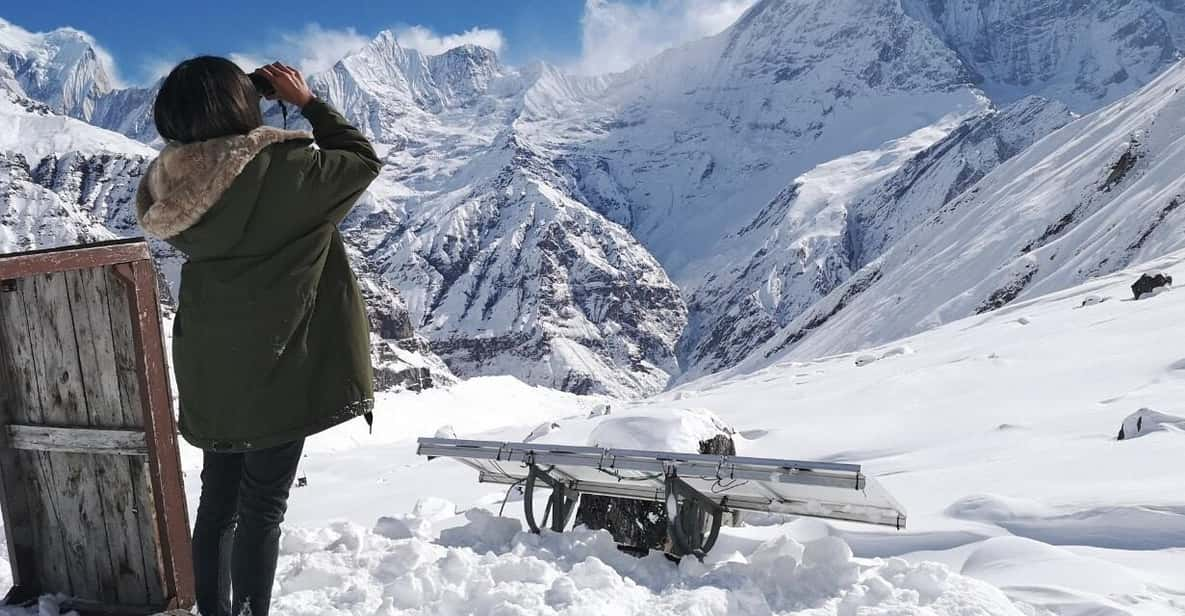
- The trek lasts seven days, starting from Kathmandu, with a base camp elevation of 4,130 meters.
- The itinerary includes daily treks through stunning landscapes and cultural interactions with local Gurung communities.
- Participants should have good physical fitness, as the trek involves significant altitude gain and varying terrain.
- Essential inclusions are airport pickup, accommodation in Kathmandu, guided support, and trekking permits, while meals and personal expenses are additional.
- Proper gear, hydration, and acclimatization practices are crucial for a safe and enjoyable trekking experience.
It's also worth checking out some other tours and experiences nearby.
Trek Overview and Highlights
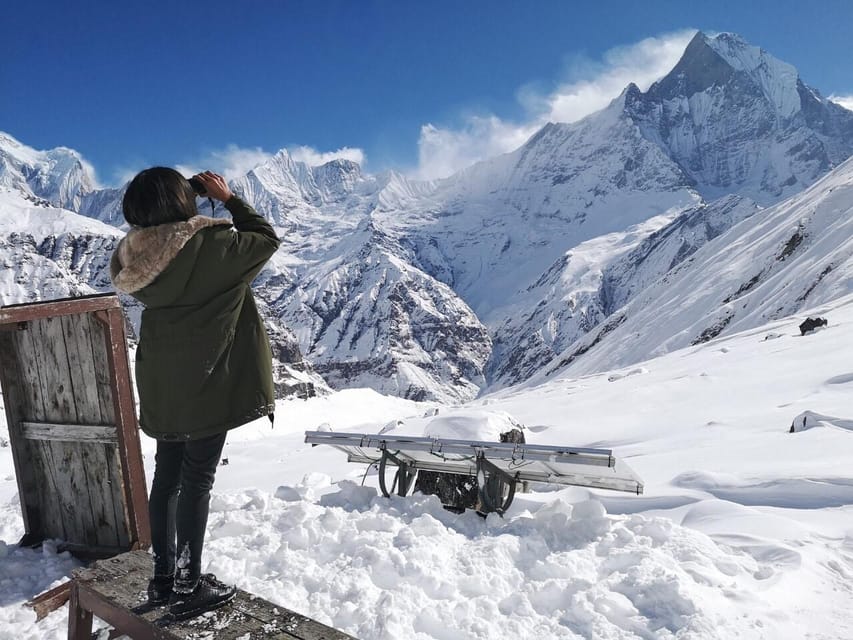
The Annapurna Base Camp Trek offers an exhilarating journey through stunning landscapes, where trekkers can soak in breathtaking views of the majestic Annapurna Mountain range and enjoy the rich culture of local Gurung villages.
This seven-day trek, starting at just £381.87 per person, boasts spectacular sights of Annapurna, Fishtail, and Hiunchuli.
Trekkers often share stories of wandering through lush rhododendron forests, where vibrant blooms surround them.
With a sense of accomplishment upon reaching the base camp at 4,130 meters, it’s a trip that stays with you.
Plus, the chance to interact with local communities adds depth to the experience.
For those planning, early spring and autumn are the best times to tackle this adventure.
Daily Itinerary
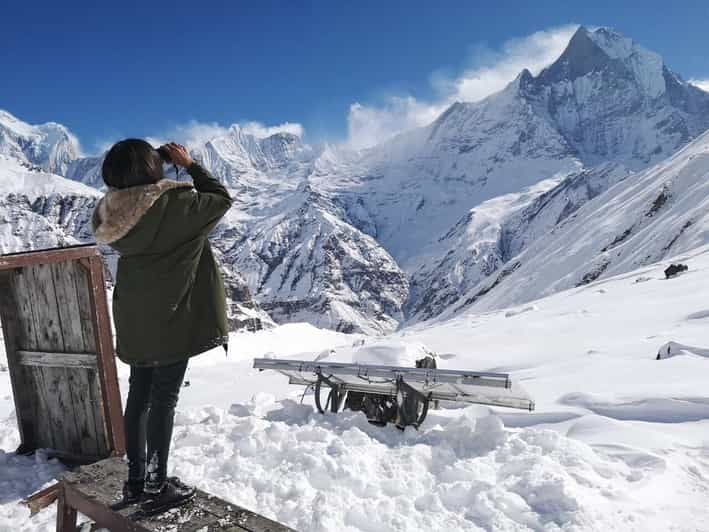
Embarking on the Annapurna Base Camp Trek means following an exciting daily itinerary that guides adventurers through stunning landscapes and vibrant local culture, starting with an arrival in Kathmandu for a trek briefing. Each day unfolds new experiences, from the bustling streets of Kathmandu to the serene beauty of the base camp.
Here’s a glimpse of the daily itinerary:
| Day | Destination | Altitude (m) |
|---|---|---|
| 1 | Kathmandu | 1350 |
| 2 | Ghandruk | 1950 |
| 3 | Sinuwa | 2340 |
| 4 | Deurali | 3230 |
| 5 | Annapurna Base Camp | 4130 |
| 6 | Bamboo/Sinuwa | 2340 |
| 7 | Simrung | 830 |
Trekking through lush landscapes, adventurers often share laughter and stories, making unforgettable memories along the way.
Inclusions and Exclusions
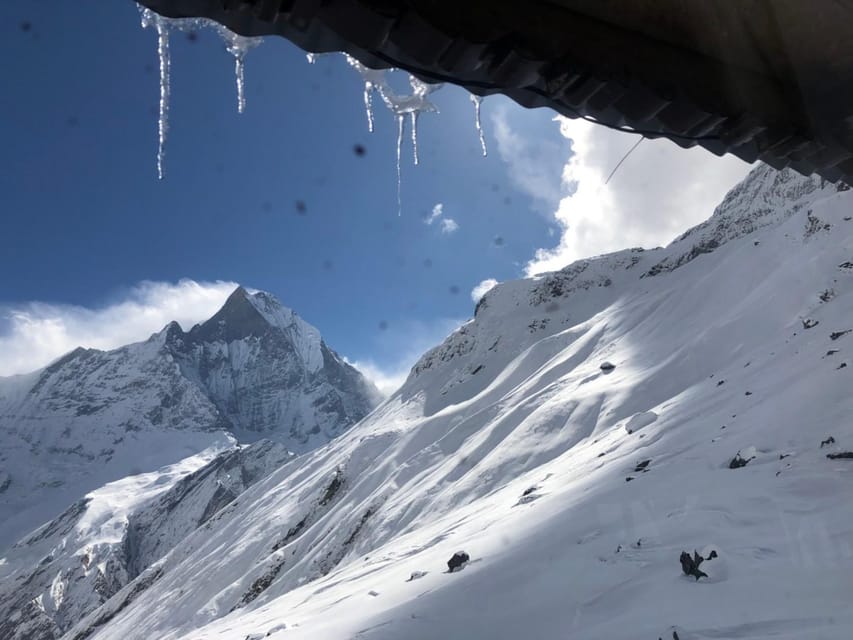
When planning the Annapurna Base Camp Trek, travelers can expect a well-rounded package that covers essential needs while leaving room for personal preferences. Here’s what’s typically included:
-
Airport pickup
-
Accommodation in Kathmandu (with breakfast)
-
Experienced English-speaking trekking guide
-
Necessary trekking permits and documents
However, it’s important to note what’s not included:
-
Food and drinks (available for purchase)
-
Gratuities (optional)
-
Personal expenses
-
Emergency rescue and porter fees
Travelers often find that budgeting for meals and tips can enhance their experience. During his trek, one traveler learned to embrace local cuisine, making memorable connections with fellow trekkers and locals alike.
This unique blend of inclusions and exclusions creates a personalized adventure tailored to each trekker’s journey.
Preparation and Recommendations
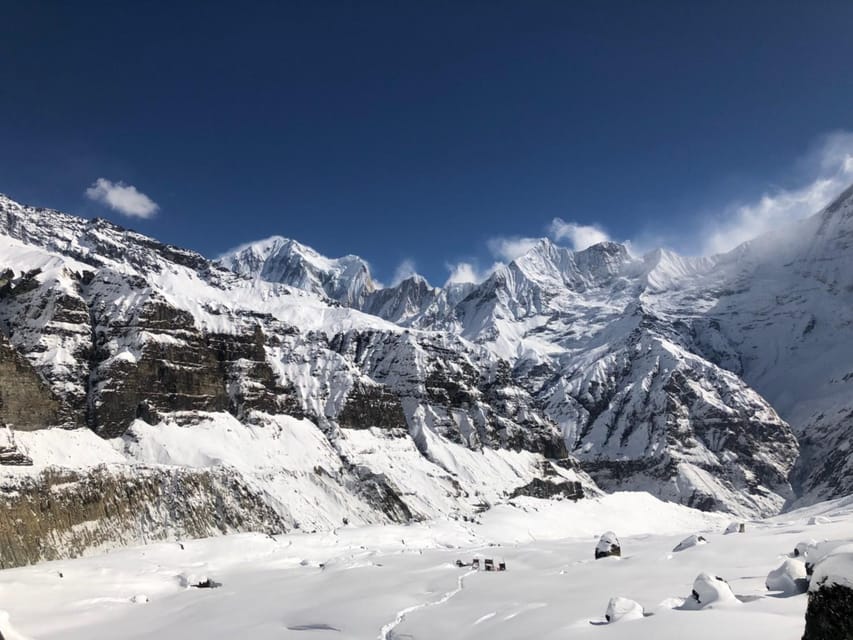
Packing smartly can make all the difference for trekkers heading to Annapurna Base Camp, ensuring they’re ready for both the stunning landscapes and the unpredictable weather.
A sturdy pair of hiking shoes is essential; they’ll save your feet on those long days. Comfortable, layered clothing is a must, as temperatures can shift dramatically.
Trekking poles can help with stability on steep trails, and don’t forget cash for snacks along the way. A copy of your passport and a passport-sized photo are handy for permits.
Seasoned trekkers often recommend preparing for both sun and rain—one trip, they got caught in a surprise storm!
With the right gear, trekkers can focus on enjoying the breathtaking views and rich culture.
Participant Requirements
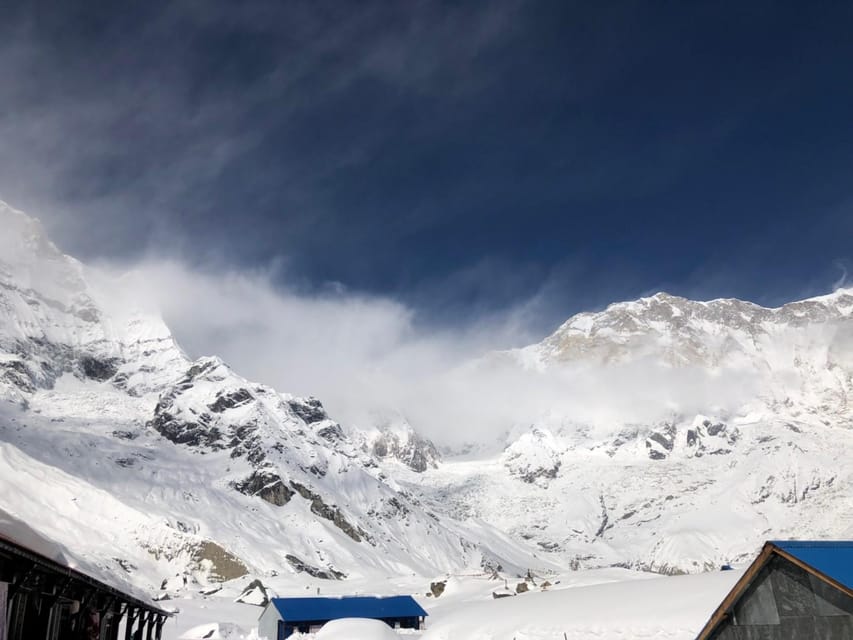
Trekking to Annapurna Base Camp isn’t just about the right gear; it’s also important to know who can fully enjoy this adventure and who might face challenges along the way. This trek’s demanding terrain isn’t suitable for everyone. Participants should consider the following:
-
Pregnant women should avoid this trek due to altitude risks.
-
Wheelchair users will find the paths inaccessible.
-
Beginner trekkers may struggle with the elevation and duration.
-
Individuals with serious health conditions should consult a doctor beforehand.
Those in good physical shape and familiar with trekking will have a fantastic experience.
A friend of mine who joined last year remarked on the supportive atmosphere among trekkers, making the journey feel like a shared adventure.
Travel Tips
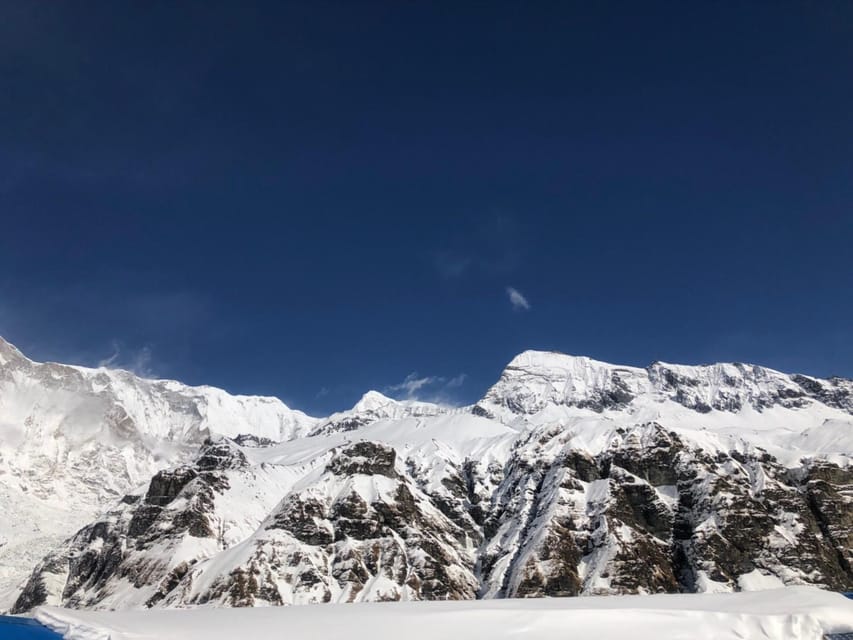
How can trekkers ensure a smooth and enjoyable experience on the Annapurna Base Camp trek?
First, they should pack light but smart. Comfortable hiking shoes and layers are essential due to the changing weather. A personal trekker once shared that bringing extra snacks made a huge difference in energy levels during long stretches.
Staying hydrated is crucial; carrying a refillable water bottle is a game changer.
Trekkers should also familiarize themselves with altitude sickness symptoms and take it slow, especially on steep ascents.
Finally, engaging with local guides enriches the experience; they provide insights that transform the trek into an unforgettable adventure.
A little preparation goes a long way in making the journey memorable!
Cultural Insights
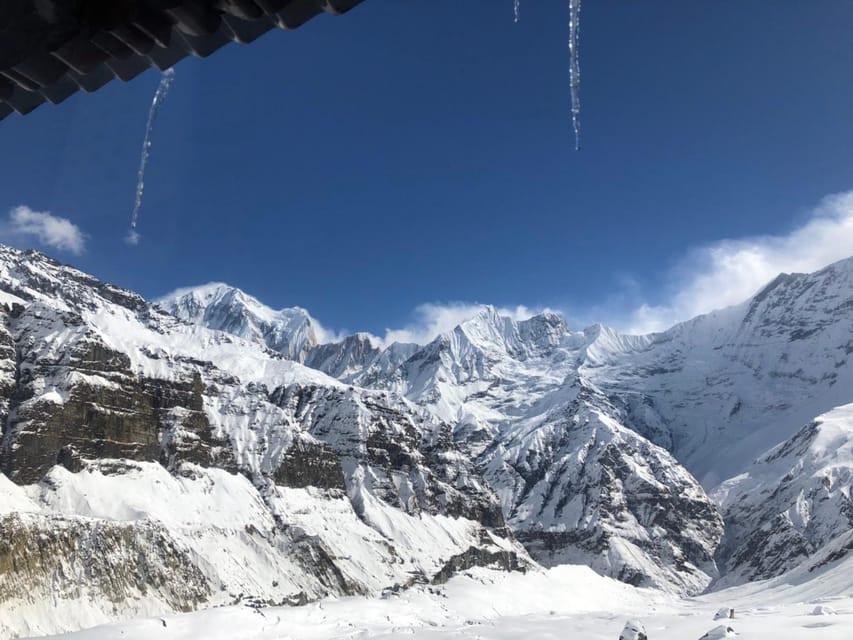
Experiencing the rich culture of the Annapurna region adds a unique layer to the trek, as trekkers encounter vibrant Gurung villages and the warm hospitality of local communities.
Trekkers often find themselves welcomed with open arms, enjoying local traditions and customs that make the journey unforgettable.
Here are some cultural highlights to look for:
-
Traditional Gurung dances during festivals
-
Local handicrafts and textiles available for purchase
-
Delicious home-cooked meals featuring local ingredients
-
Opportunities to participate in community activities
One trekker recalled sharing stories with villagers over a steaming bowl of dal bhat, feeling truly connected to the culture.
Embracing these experiences enriches the trek and fosters a deeper appreciation for the Annapurna region’s heritage.
Safety Considerations
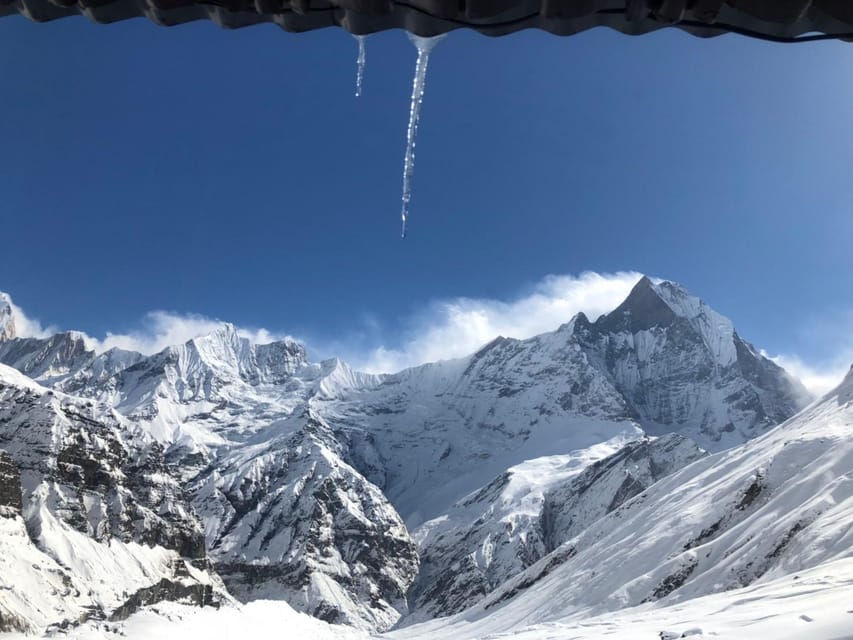
When venturing into the Annapurna region, trekkers should prioritize safety by staying aware of their surroundings and acclimatizing properly to the altitude.
It’s vital to listen to your body—if you’re feeling dizzy or overly fatigued, take a break. Many trekkers have experienced altitude sickness, so it’s recommended to ascend slowly and stay hydrated.
A seasoned guide shared that taking regular breaks not only helps with acclimatization but also allows trekkers to soak in the stunning views.
Packing a basic first-aid kit is also smart; you never know when a blister might pop up.
Ultimately, staying informed and prepared can make all the difference in enjoying a safe and memorable trek to Annapurna Base Camp.
Here's a few more nearby tours and experiences we think you'll like.
Frequently Asked Questions
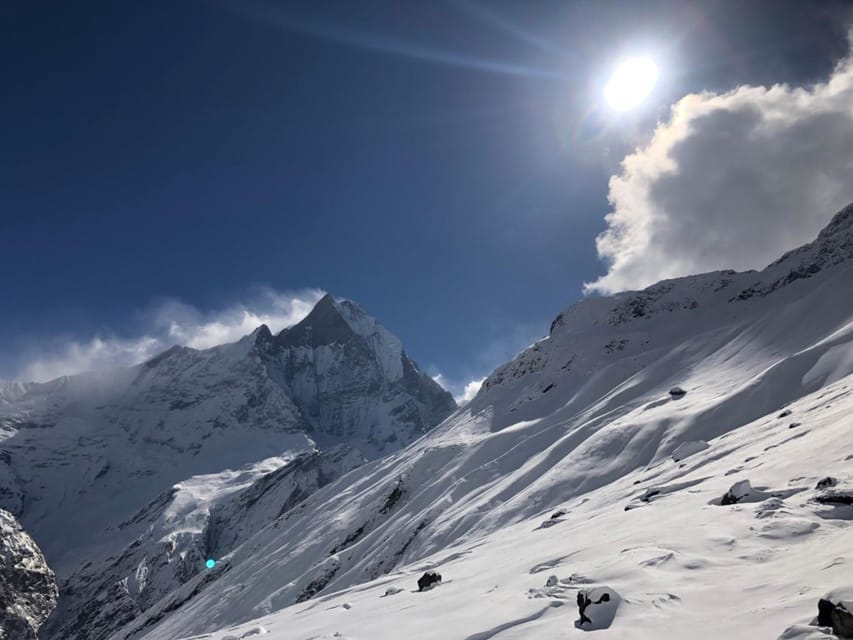
What Is the Best Time to Book This Trek?
She recommends booking the trek well in advance, ideally during spring or autumn. This way, they can secure spots and enjoy the best weather, stunning views, and vibrant landscapes without the last-minute rush.
Are There Age Restrictions for Participants?
There aren’t strict age restrictions, but participants should be physically fit. Many older trekkers thrive, while younger ones need supervision. It’s all about preparation and ensuring everyone enjoys the adventure safely and comfortably.
Can I Join the Trek Solo?
He can definitely join the trek solo! Many travelers do, enjoying the camaraderie with fellow trekkers. Just be prepared for varying conditions and pack wisely to make the most of the adventure!
Is Travel Insurance Recommended for This Trek?
Travel insurance’s definitely recommended for trekkers. It protects against unexpected events like cancellations or emergencies. Many who’ve trekked before swear by it, sharing stories of how it saved their trips and provided peace of mind.
Are There Options for Vegetarian or Special Dietary Needs?
When planning a trek, she found that many guest houses offer vegetarian options and can accommodate special dietary needs. It’s best to communicate those requirements in advance to ensure everyone enjoys their meals.
Not for you? Here's more of our most recent tour reviews happening neaby
- Everest Panorama Trek
- 3 Days Ghorepani Poonhill Trek From Kathmandu Via Flight
- From Kathmandu: 10 Day Mardi Himal Base Camp Premium Trek
- Kathmandu: 11 Days Annapurna Base Camp Trek With Poon Hill
- 7 Days Langtang Valley Trekking (From Kathmandu)
- Monastery And Homestay Trek
- From Kathmandu: 7 Days Annapurna Poon Hill Trek
- 3 Days All Inclusive Kathmandu Tour Including 7 UNESCO Sites
- Ghorepani Poonhill Trek
- From Pokhara: 9 Days Langtang Gosaikunda Trek
- 12-Day Langtang Trek: Join Our Fixed Group Departure
- Kathmandu: 7 Days Poon Hill and Hot Springs Trek
- From Kathmandu: 9 Day Pikey Peak Trek
- From Kathmandu: 8- Days Langtang Valley Trek
- From Kathmandu: 9 Days 8 Nights Langtang Trek
Recap
As you wrap up your incredible seven-day trek to Annapurna Base Camp, you’ll carry unforgettable memories of stunning landscapes and warm local interactions.
This journey isn’t just about reaching the summit; it’s about embracing the adventure, challenging yourself, and connecting with nature.
So lace up those boots, soak in the views, and don’t forget to capture the moments.
You’ll find that the trek changes you in ways you never expected, leaving you longing for your next adventure in the Himalayas.
